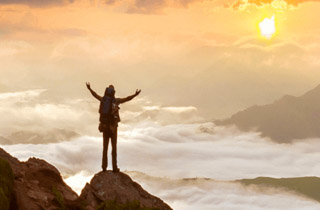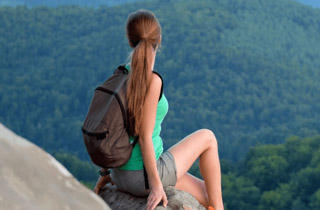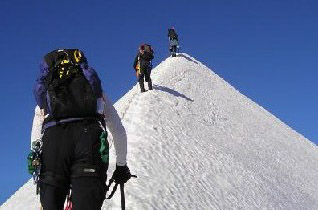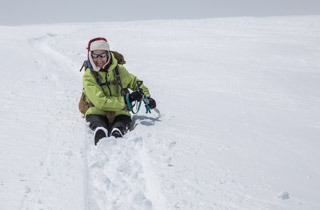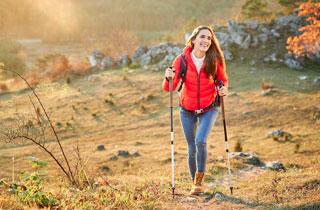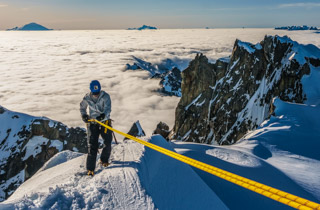Performance of Glute Medius Exercises
Performance of Glute Medius Exercises
Stronger Glute Medius for Alpine Adventure
The gluteus maximus and medius are two strong buttocks muscles that contribute to forward and upward propulsion, as well as lateral and sideways motion. The gluteus maximus and hamstrings are recruited in forward bending movements that involve extending the hip, such as in step-ups, good mornings, squats, lunges, and deadlift variations.
The gluteus medius, on the other hand, steadies the pelvis so it does not rotate downwards or droop when you lift the opposing side or stand on one leg. It also assists with moving the thigh outward while keeping the hip still. The gluteus medius lies on the side of the hip directly above the larger gluteus maximus.
The gluteus medius can get neglected when we spend long amounts of time sitting, or if we focus on more quadriceps-dominant activities such as running and cycling. Sometimes knee pain can be caused by overusing quadriceps muscles when the glutes don’t fire properly.

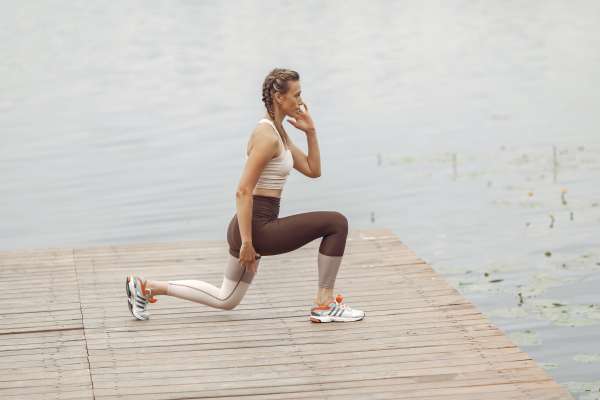
Who Needs a Strong Gluteus Medius?
If your hips get tight in the early season as you start to ramp up pack weight, consider incorporating a few of these targeted exercises for several weeks leading up to your first outing.
To “boost your derriere” without a lot of traditional strength training, try adding a backpack to your elliptical, stair, hill climbing, or treadmill workouts. The following exercises will help you start increasing your uphill power and stamina. They are arranged from easiest (and most targeted) to most difficult (i.e. requiring the most balance, practice, and technical skill to perform properly). Add them to your program in a similar fashion.
Hip Hike
Facing a mirror, stand sideways on a step, box, or bench 4-10” high, with one leg free on the bench and the other suspended above the floor. Hold both hips squared forward and your shoulders level. Keep your working leg (the one on the bench) straight–do not let the knee bend. Raise your free hip directly upward and then drop the leg down so that your waistline tilts up and down. To add difficulty, use ankle weights or hold dumbbells in each hand. This exercise is one that physical therapists use to help correct what is known as “Trendelenburg gait” in which the affected hip goes into hip joint adduction during each weight-bearing phase (i.e. step) of a walking gait. The femur (thigh bone) tends to ride upward, causing a pronounced limp or waddle.


Performance of the Hip Hike
Forward Straight Leg Raise
Lie on your side with the bottom leg bent and the top leg extended in front of the body at a right angle to the torso. Keep your hips stacked and avoid rocking the torso back as you raise the extended top leg. Keep the heel higher than the toe to maximally recruit the glutes. For more resistance, add a boot or ankle weights or hold a light dumbbell on the top thigh near the knee. Perform the same number of sets and repetitions on both legs. For greater neck comfort, rest your head on your arm for support.

Performance of the Forward Straight Leg Raise
Single-Leg Bridge
Lie on your back with your right ankle resting on your left knee, your left foot flat on the floor about two feet from your butt, and your arms braced on the outside of your hips for balance. Exhale and press down through the left foot to raise both hips evenly off the floor. Keep the pelvis level (i.e. do not let the hips droop to one side). For added difficulty, place the working leg on a bench or ball positioned a few feet from your butt or hold a weight at the hip of the targeted leg (the one pressing into the floor).

Performance of the 1-leg Bridge
Off-set 1-leg Deadlift
This exercise is wonderful for building hip and glute strength, as well as stability and balance in the ankles, calves, and feet. Stand on one leg with a dumbbell in the same hand as the standing leg for 6-8 repetitions, then without changing legs, complete the same number of reps holding the weight in the other hand. Once you finish your reps with that leg, switch legs and do half the desired reps holding a weight in one hand, then the other. Bend at the ankle, knee, and hip as much as you can.
Your goal is to reach toward the floor with the dumbbell. For an additional challenge, stand on a slightly elevated surface such as 1) a 25# plate, 2) a two-by-four board, 3) a plyometric box, or 4) a half-foam roller. You can also include movements, such as biceps curls or overhead presses, to make this an effective exercise for the whole body.


